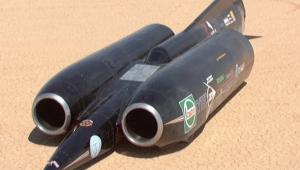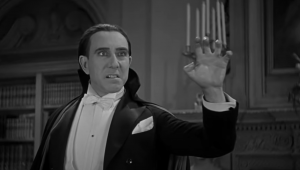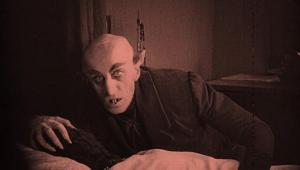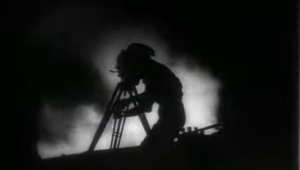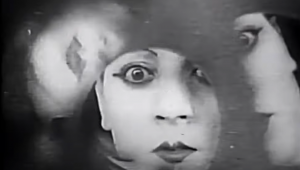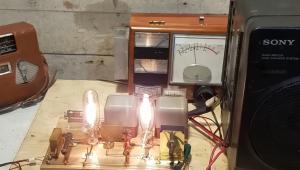How Napoleon Bonaparte Invented the Compact Disc

The story begins in 1815. French soldiers needed a way to read documents at night, without a light source. Charles Barbier, serving in the French army, devised a coding system using tactile patterns of bumps embossed on paper. Ingenious, but far from perfect. The patterns were complicated and hard to read. Moreover, instead of directly representing the alphabet, messages had to be expressed in a quasi-phonetic manner.
Imagine running your fingers over complex patterns, trying to phonetically sound out the encoded message “The left flank shall attack at dawn.” And what if you misinterpreted the bumps as “The left flank shall attack at dusk.” Uh, oh. After evaluation, the military determined that the code was difficult to use, and prone to error. They passed.
That might have been the end of our story. But Monsieur Barbier had faith in his invention and, crucially, realized that there might be another very nonmilitary application. In 1821 he demonstrated his system at the Royal Institution for Blind Youth in Paris. One of the young blind students there was named Louis Braille.
Braille recognized the flaws in Barbier’s implementation but was intrigued by the potential of the idea. In 1824, Braille (then aged 15) devised a simplified tactile system that coded each letter of the alphabet. A reader could fluently run her hands across patterns of bumps, quickly reading the text. The system was subsequently expanded to encompass many other symbols and shorthand methods, essentially creating a unique writing system, vastly increasing its utility. Genius!
In 1877, Thomas Edison was developing a method to record and play telegraphic messages. His mechanism received Morse-code dots and dashes, recorded them as embossed bumps on a paper medium, then replayed them. Observing how the bumps could preserve telegraph signals, Edison wondered whether physical formations of some sort could also preserve audio signals. They could. Edison’s phonograph used grooves instead of bumps, but it showed that audio could be physically captured.
A century later, engineers at Philips and Sony were developing a new digital audio disc format. They envisioned a disc holding digital audio data, read by optical means. Grooves work well for analog signals, but might digital data be better represented by bumps? It could. But their bump coding schemes were inefficient, with the result that discs would be huge or have short playing times. They needed some way to efficiently code data using as few bumps as possible.
Philips engineer Kees Schouhamer Immink took up the challenge and invented Eight-to-Fourteen Modulation (EFM). No matter what the audio signal, it is physically represented on the disc by a family of bumps of nine different lengths and spacings between them. This orderly bump design makes it easy for a laser beam to read the data, and to stay on track. Compared with the input digital audio signal, EFM code increases the number of bits on the disc but decreases the disc real estate needed to physically store the signal. As a result, EFM improved the playing time by 30 percent compared with earlier coding schemes being considered for the CD. Genius! Thus, the Compact Disc was born.
Whoa! Hold the phone! What about Napoleon? Well, it was Napoleon, a man of restless intellect, not to mention ambition, who ordered Barbier to find a way to read documents on the battlefield at night. And there you have it. Napoleon invented the Compact Disc. Vive L’Empereur!
Well, admittedly, it’s a long journey from Bonaparte to Barbier to Braille to Edison to Immink. The original invention was text represented as bumps on paper, read tactilely by fingertips. In the later invention, a laser beam shines on a surface and the bumps create a difference in reflected intensity that is translated into audio. Not totally dissimilar.
Would Immink have invented EFM without Napoleon’s help? Of course. But I prefer to think of the story as a 160-year sequence of brilliant ideas that are bound together. In a larger sense, I think every bright idea owes a debt to many bright ideas that came before it. And that’s true, no matter how bumpy the road may be.
Postscript: Today, although it is no longer the primary reading medium for many, braille proficiency has historically allowed blind or low-vision persons to compete with or surpass their sighted peers in areas such as vocabulary and reading comprehension. I hope that someone, somewhere, is reading this column in braille, while listening to a Compact Disc. Thank you for reading. Enjoy the music.
Ken C. Pohlmann is an electrical engineer specializing in audio topics as a consultant and writer. He is Professor Emeritus at the University of Miami.
- Log in or register to post comments

